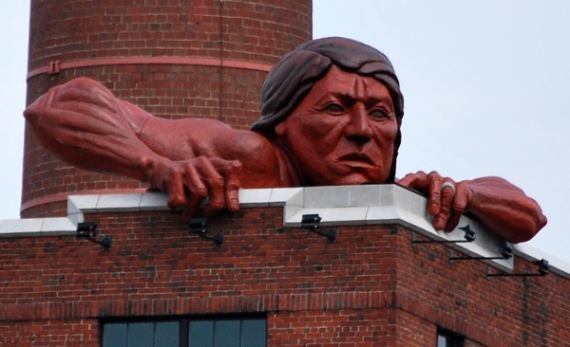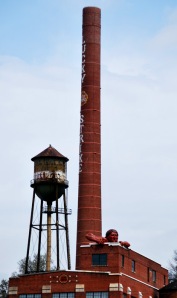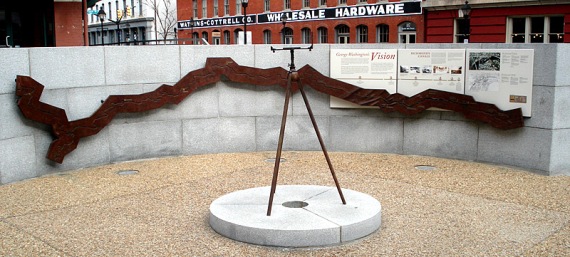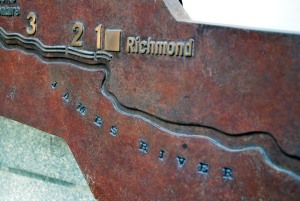 WHAT: Statue of “Connecticut” in Shockoe Bottom in Richmond, Virginia.
WHAT: Statue of “Connecticut” in Shockoe Bottom in Richmond, Virginia.
WHERE: Lucky Strike building at 2700 East Cary Street in Shockoe Bottom.
DEDICATED: November 6, 2010. (September 10, 1983 at The Diamond)
DESCRIPTION: This fiberglass and resin composition resembles a giant Indian brave peering out over a parapet. The statue measures 25 feet by 13 feet by 9 feet and weighs 2,400 pounds. It now overlooks the James River in the area near Great Shiplock Park.
* * *
The statue had been a mainstay at The Diamond during much of the Richmond Braves time at the baseball stadium, on loan from the artist. When the Braves moved out of town, the idea of a tribute to Native Americans at the stadium diminished, prompting the need to find a new home for Connecticut.
The Lucky Strike building was one of three finalists for the 25-year-old statue, including Powhatan and Henrico high schools, in that order. The board said that the Lucky Strike location provided the sculpture with the most visibility to the public.
In a news release from Odell Associates, “Connecticut,” from the Native American word Quinnehtukqut, translates “beside the long tidal river.” Sculptor Paul DiPasquale chose this name because of his original intention to unveil this monumental tribal tribute in Washington, D.C., along the tidal Potomac River.
With the selection of Lucky Strike @ Power Plant as Connecticut’s home, the Indian finally rests as intended, beside the long tidal river — the James River. The Power Plant @ Lucky Strike is a joint venture between Mac Partners and Odell Associates. This historic landmark recognized in 2009 by the American Institute of Architects and Greater Richmond Area Commercial Real Estate as an Award winning Historical Adaptive Re-Use project.













Comments & trackbacks